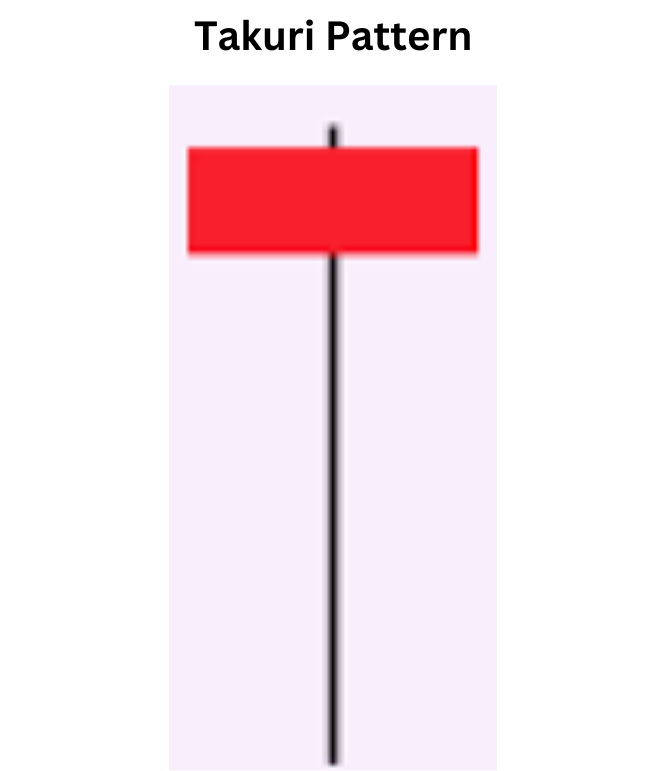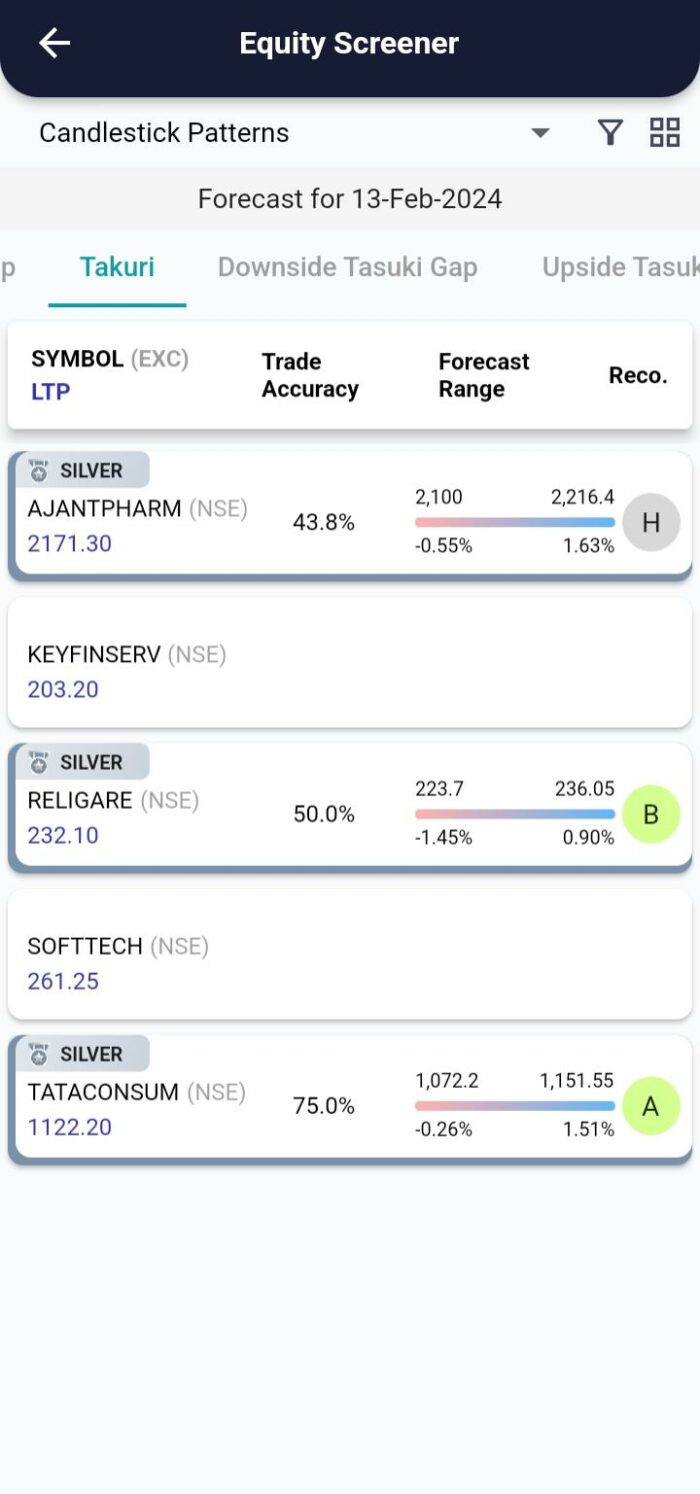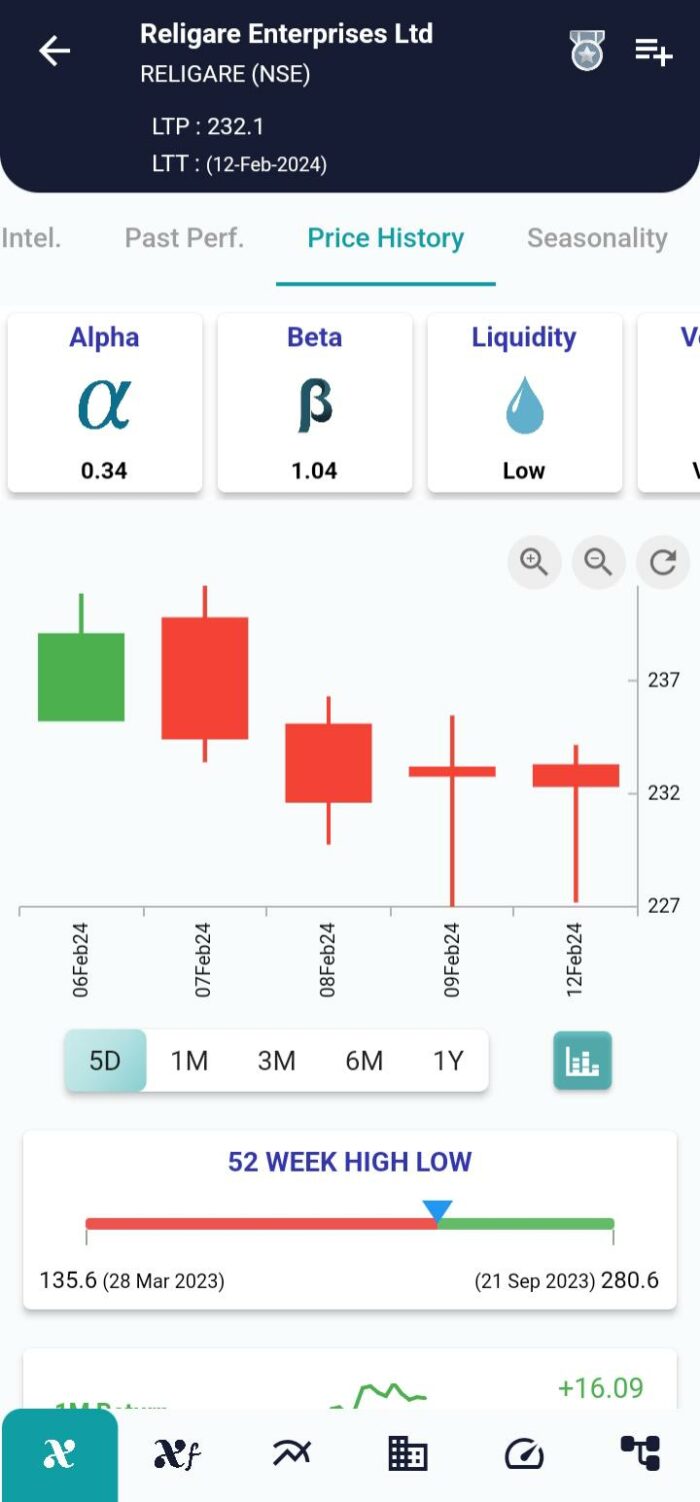Candlestick Pattern
Posted On: February 13, 2024
Takuri Pattern: A Strategic Insight into Market Exhaustion
In the dynamic realm of financial markets, traders utilize an extensive range of technical analysis tools to identify potential trend reversals and market dynamics.Candlestick patterns, renowned for their ability to provide actionable insights, play a pivotal role in this endeavor. The Takuri pattern is one such candlestick formation that demands attention from traders, acting as a signal for potential trend reversals. In this blog post, we will explore the concept of the Takuri pattern, delve into its identification process, and discuss how traders can interpret this pattern to refine their trading strategies.
The Takuri pattern is a single-candlestick formation that typically manifests at the end of a downtrend, suggesting a potential reversal to the upside. The pattern consists of a long lower shadow (wick), a small real body, and a short upper shadow.

Identifying the Takuri Pattern:
To identify the Takuri pattern, traders should pay close attention to the following key features:
- Downtrend: The pattern usually emerges within an ongoing downtrend, indicating potential bullish reversal.
- Long Lower Shadow: The candlestick has a long lower shadow, indicating that prices moved significantly lower during the trading period.
- Small Real Body: The real body is small, suggesting a narrow price range between the opening and closing prices.
- Short Upper Shadow: The candlestick has a short upper shadow, reflecting a lack of selling pressure at higher levels.

Interpreting the Takuri Pattern:
The Takuri pattern implies a potential exhaustion of selling pressure and a shift in market sentiment from bearish to bullish. The long lower shadow indicates that prices dipped significantly lower but were rejected, and the small real body suggests indecision in the market. Traders interpret this pattern as a signal to consider initiating long positions or tightening stop-loss levels on existing short positions.
Confirmation and Trade Execution:
While the Takuri pattern provides a potential reversal signal, traders often seek supplementary confirmation before entering trades. They may consider the following factors:
- Volume Confirmation: Higher trading volume during the pattern’s formation enhances the credibility of the potential reversal.
- Support and Resistance Levels: Identifying key support and resistance levels can further validate the pattern’s authenticity and guide in setting realistic price targets.
- Technical Indicators: Integrating the Takuri pattern with other technical indicators, such as moving averages or oscillators, enriches the trading decision-making process.

Conclusion:
The Takuri pattern serves as a valuable tool for traders, offering insights into potential bullish reversals at the end of a downtrend. By understanding its identification process and adeptly interpreting this pattern, traders can refine their trading strategies.
However, it’s crucial to recognize that no pattern guarantees success, and informed trading decisions necessitate additional verification and comprehensive analysis. As with any trading strategy, risk management and prudent decision-making remain paramount for traders navigating the complexities of financial markets.
Where can I see further insights on this stock?
xCalData offers unbiased insights into stocks. Download the app from google play. For Actionable Intelligence, subscribe to xCalData app on Android devices: Download here
For Actionable Intelligence, subscribe to xCalData app on Android devices: https://tinyurl.com/downloadxCalData

Disclaimer: The securities quoted are for illustration only and are not recommendatory.
Popular Posts
-
Stock of Interest . August 23, 2024
#HSCL (NSE) Stock Report | 23 Aug 2024
-
Stock of Interest . August 23, 2024
Add Zerodha trading account to xCalData
-
Stock of Interest . August 23, 2024
What is xCalData , how to use it and how accurate is it?
-
Stock of Interest . August 23, 2024
Jurik Moving Average (JMA): A Profit Trading Insight